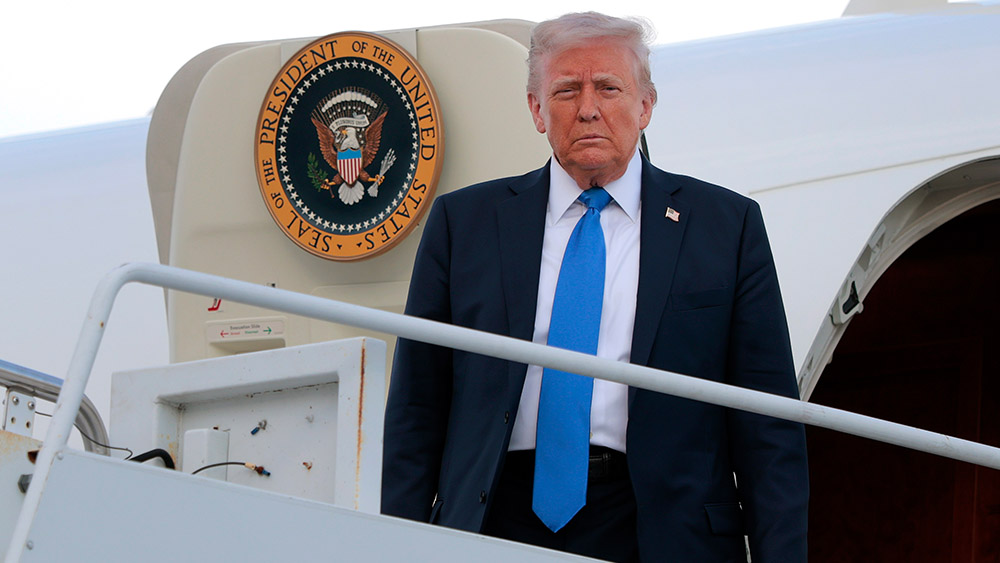 Parler
Parler Gab
Gab
- U.S. health officials, led by RFK Jr. and FDA Commissioner Marty Makary, are replacing the outdated VAERS with a real-time electronic health record (EHR) system to improve vaccine safety monitoring, addressing VAERS’s historical underreporting (capturing <1% of injuries).
- The new system uses Health Information Exchanges (HIEs) to track adverse events in real time, replacing VAERS’s reliance on self-reports. Algorithms will detect patterns (e.g., myocarditis spikes) and compare vaccinated/unvaccinated cohorts for clearer risk assessments.
- RFK Jr. and researchers have long criticized VAERS for massive underreporting (e.g., a 2006 Harvard study found a 100-fold gap). The overhaul aims to close this gap and investigate links between vaccines, genetics and environmental factors.
- Critics warn the new system must ensure public transparency and data privacy, avoiding opaque oversight. Some argue RFK Jr. overstates VAERS’s flaws or distracts from vaccine benefits, but even skeptics agree modernization is needed.
- The reform represents a rare bipartisan push to restore faith in public health. Success hinges on data-driven transparency — balancing safety, accountability and privacy — amid rising distrust and health misinformation.
From 1% to real-time: closing the data gap
The push for reform stems from a decades-long backlog in vaccine safety reporting. Harvard Medical School researchers revealed in 2006 that VAERS underreported injuries by a factor of 100, a gap Kennedy highlighted as “outrageous” at a March “Make America Healthy Again” event in Indiana. “We’re going to find out what contribution vaccines and everything else — mold, electromagnetic fields, food — began in the late 1980s — whichever are the culprits,” he said, calling for a data-driven approach to distinguish between vaccine side effects and environmental risks. The FDA’s plan now uses EHRs to capture “the full clinical landscape” of patients’ health pre-, during and post-vaccination, according to Trial Site News founder Daniel O’Connor. Unlike VAERS, which relies on delayed, incomplete, or unverified reports, EHRs allow algorithms to flag patterns — such as sudden rises in myocarditis or autoimmune flares — in near real time. “VAERS catches the sparks, but not the fire,” O’Connor said. The system will also enable comparisons between vaccinated and unvaccinated cohorts to isolate risks, a capability VAERS lacks without external data. Kennedy’s sub-agency within the CDC, announced in March, will focus on expanding this surveillance to include genetic factors influencing adverse reactions, as noted by Children’s Health Defense scientist Karl Jablonowski. “Interfacing HIE systems could reveal associations between DNA markers and outcomes,” he explained, potentially paving the way for personalized vaccination strategies.Modernizing trust in public health
Critics of VAERS have long accused the system of perpetuating a “false illusion of vigilance,” as Jablonowski described it. Even proponents of traditional vaccine safety, such as FDA Commissioner Makary, concede the need for drastic modernization. On SiriusXM, Makary highlighted EHRs’ power to analyze 100,000 patient records concurrently, allowing regulators to quantify events like hospital readmissions within days of a shot. “Real science demands transparency and accountability,” an HHS spokesperson added, framing the shift as a return to empirical rigor. But the overhaul faces hurdles. Transparency advocates stress that the new system must remain open to public scrutiny, not another “closed system” run by contractors or opaque officials. “Without accountability, we risk insanity — same failures, same results,” warned VAERS expert Albert Benavides. Privacy concerns also persist, with immunologist Jessica Rose noting that anonymized data “could…become accessible by anyone.” HHS has not yet finalized protocols to address these issues. Kennedy’s critics, including some public health researchers, argue his reforms conflate proven vaccine benefits with unproven risks. STAT News reported that Kennedy misrepresented a 2006 study’s findings to exaggerate VAERS’s shortcomings, while others see his focus on environmental exposures as a distraction from vaccine efficacy. Yet even skeptics acknowledge the system needed an overhaul: “This is the type of modernization we need,” O’Connor said.A watershed moment
The decision marks a rare bipartisan acknowledgment of systemic failures in U.S. healthcare infrastructure. As the CDC maps genetic vulnerabilities and the FDA merges adverse event databases for drugs and devices, the stakes are existential. “The key is not controlling the outcome, but letting the data speak,” O’Connor reiterated — a mantra resonating with a public weary of conflicting medical narratives. For Kennedy, whose environmental activism links to his health initiatives, the reform is both technical and cultural. “Public trust demands we reveal all culprits, even uncomfortable ones,” he told NewsNation in April. Whether the new system identifies hidden risks or confirms vaccine safety, the consensus is clear: Patients deserve answers rooted in data, not dogma. In an age where health misinformation fuels political divisions, the U.S.’ pivot to transparent, EHR-driven surveillance could redefine public health as a pillar of national security — or risk further eroding the fragile trust in its institutions.The data speaks — or does it?
As the EHR initiative unfolds, the test lies in execution. Will real-time data finally chart a course between safety and autonomy, or will underreporting or overreach persist? For now, RFK Jr.’s vision — shared even by his skeptics — has galvanized action. “We owe it to the public,” O’Connor said, echoing a sentiment transcending partisan lines. The world now watches whether science, not spin, emerges. Sources for this article include: ChildrensHealthDefense.org StatNews.com TrialSiteNews.comNetanyahu vows “full force” assault on Gaza as forced expulsion of Palestinians looms
By Cassie B. // Share
Trump names Casey Means as his new pick for U.S. surgeon general
By Ramon Tomey // Share
WHO study confirms cell phone radiation causes cancerous TUMORS in animals
By Ava Grace // Share
Governments continue to obscure COVID-19 vaccine data amid rising concerns over excess deaths
By patricklewis // Share
Tech giant Microsoft backs EXTINCTION with its support of carbon capture programs
By ramontomeydw // Share
Germany to resume arms exports to Israel despite repeated ceasefire violations
By isabelle // Share










